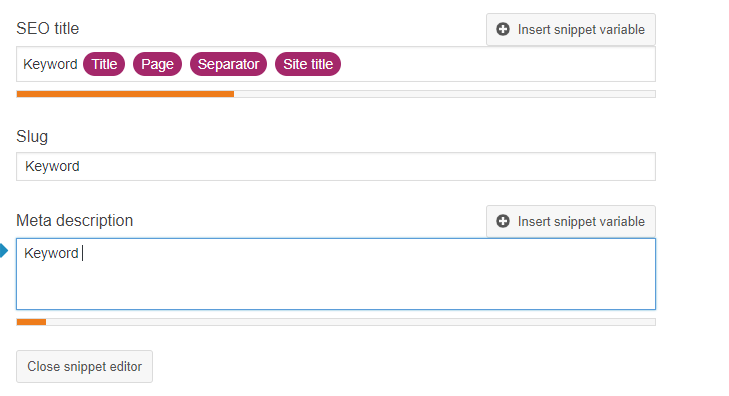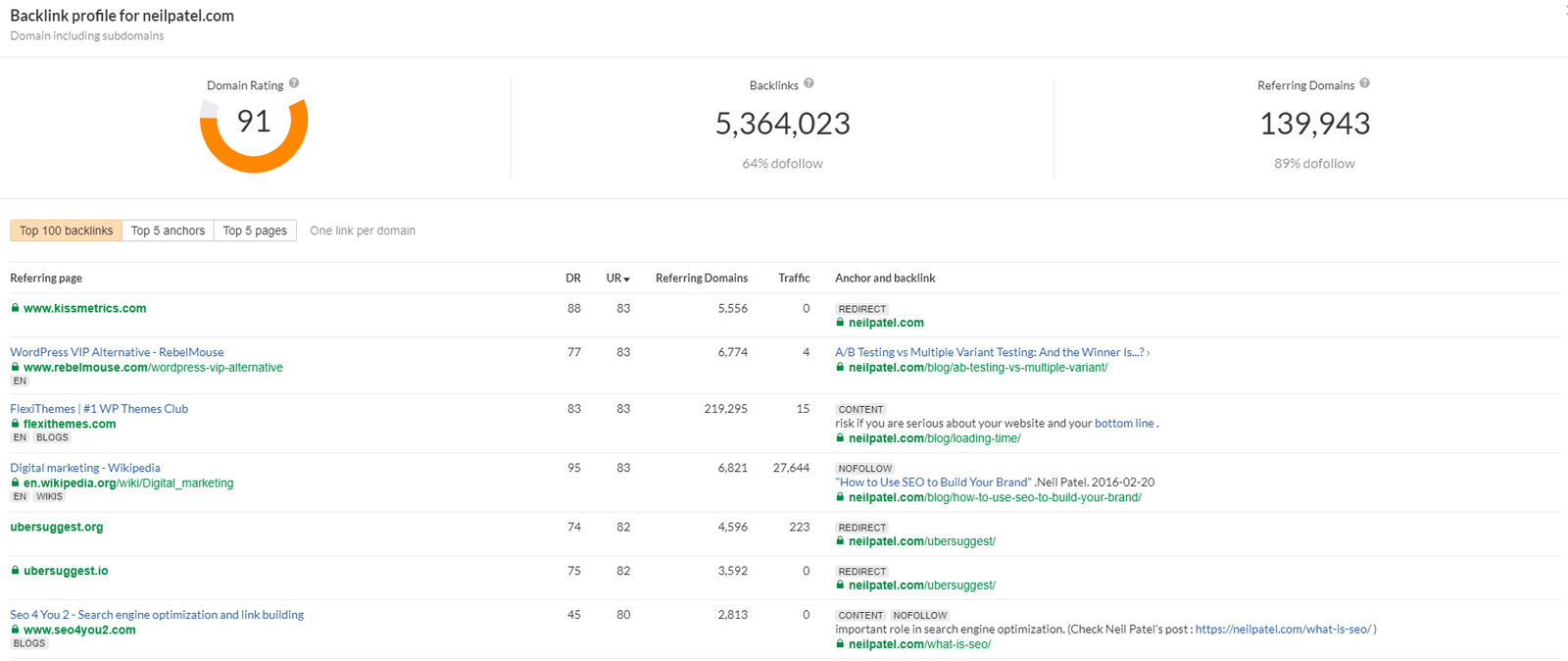Generally, everybody agrees on the same the search engine optimization (SEO) process and similar methodology. The process is usually 5-6 steps, including:
- Set up goals
- Keywords and competition research
- Create content
- On-site and on-page optimization
- Off-site and off-page optimization
- Assessment and maintenance
However, it doesn’t start and finish with these steps. SEO is an ongoing project, and to sustain your success, it is important to assess the results and continuously improve your strategy. Therefore, you need to understand the process to increase your chance of success, and help you find a good SEO service.
We are breaking it down into the six steps, and will explain the meaning of each step. We know some of you want to see results and get tons of traffic to your website right away. However, ranking high and getting visitors takes time, just like how Rome wasn’t built in a day.
We will also explain our methodology when doing the research and creating the content. This is where most articles lack in detail. A solid methodology will give you better results, so you can find the winning formula and reuse it for future projects.

Set up goals
The most important, yet many times overlooked, step. What do you want out of doing SEO? Is it to increase traffic to your website? Improve customer conversion rate? Become more visible on the web? For brand awareness? What is your timeline for each milestone?
You need to clearly define the desired outcome, and not to change your goals half way. Once you lose track, it will affect the other steps and the whole project may become useless. Be realistic when setting your goals. If you are a new site or business, then it is not reasonable to expect tens of thousands of visitors within the first week.
Keywords and competition research (Methodology)
A successful SEO process begins with research. You need to understand how people search, what people search for, and what your competition is doing to rank on the first page. You need to find the best possible keywords to target and reach your potential customers.
Most keyword finding tools have metrics including:
- Related keywords; what people are also searching for.
- Top websites that rank on the first page.
- The keyword difficulty; the lower the better.
- The average monthly search volume; how many people searches for this keyword per month on average.
- CPC (Cost per click in Google ads); the average amount advertisers are paying for their business to show up when people search for this keyword.
From this, we developed a method that allows you to systematically analyze the data and find out the success factors. It uses the possible combinations of the metrics to make it easier to choose the keywords.
How to read the table:
Featured snippet: For every search, there is the possibility of a “Featured snippet” or called in the SEO world, “Position zero”. When there is a featured snippet, on average, more than 50% of people will click on it. Your keyword tool showing the top-ranking websites should also show whether there is a featured snippet. It is hard to rank and get traffic when it exists.

KD: The keyword difficulty. It should be marked as “Easy” or similar. You should ignore all the “Possible” or “Hard” keywords, because it means the chance of you ranking high for those words are very low.
CPC: If advertisers are willing to pay to rank for the keyword, then it is safe to assume that they are getting customers/sales from it. In other words, it is “valuable” word.
Y for featured snippet means the snippet exists. Y for KD means the difficulty is below or equals to “Easy”. Y for CPC means the CPC is above zero.
There are in total eight combinations. In theory, the best keywords are N, Y, Y. However, what works for others, might not work for you. You need to test each combination yourself.
You might see that four combinations have been crossed out (in red), that is because, as we mentioned above, keywords harder than “Easy” is not worth it for now. It also means that you need at least four articles/blogs, one for each combination and keyword, as a start. Of course, the more you write for each combination the better.
| Combination | Featured snippet | KD | CPC |
| 1 | Y | Y | Y |
| 2 | Y | N | Y |
| 3 | Y | N | N |
| 4 | Y | Y | N |
| 5 | N | Y | Y |
| 6 | N | N | Y |
| 7 | N | N | N |
| 8 | N | Y | N |
Create content
The rule of thumb when creating content is that you are writing for the readers first. So, don’t use unnatural sentences or awkward wording. Create unique and meaningful content. Content can be images, videos, social media posts, but in this case, we will focus on texts.
We have summarized how you should write your text:
- Try to write minimum 400-600 words. A long text usually contains detailed information, so you would get ranked higher and readers will more likely read the entire text. However, don’t write for the sake of word count.
- Choose topics that is related to your business/website.
- Max 250 words per section/heading and use paragraphs. You are writing for humans, so give them a break once in a while and break up your text.
- 1 image/video per section/heading. Reading pure text is boring and not good for ranking. Use multi-media to liven your text up.
- Write in plain simple language. Not everyone knows complex words. Your reader will not stay if they can’t read your text. The rule is to write so a fifth grader can understand.

On-page optimization
On-page optimization usually refers to technical SEO. It is the things you can do on the page to make it easier for search engines to index and rank you. This includes:
- Using post tags.
- At least one keyword/phrase for one text.
- Strategically use your keywords and use synonyms throughout the text.
- Avoid overusing the keywords, for example, the same one appears four times in one sentence.
- Match user/search intent. It means what kind of content are people expecting when searching. There are four types of intent: Informational, Commercial, Transactional and Navigational.
Informational type is when people are looking for general information, for example, how to bake a cake, where to find good coffee and such.
Commercial investigation means people want to make a purchase, but they want to know more about the brand, product or service.
Transactional searchers know what they are buying, they are just looking for a place to buy it.
Navigational intent is simply people using search engines to navigate a specific website. For example, Amazon track orders or Gmail login. It could be that people find it easier to search for the page than to type the url, or they don’t know the url in the first place.
- Fill out your meta description and include your keyword.
- Put the keyword in the title and use it in headings as well.
- Have the keyword in your image alt field and url.
- Include links to other credible websites and pages on your website.
- Make sure your website has a sitemap.
- Improve your website’s loading speed using cache.

Off-page optimization
Off-page SEO covers all the effort you do outside your website to increase traffic and ranking. Link building is the most common off-page optimization, have other more reputable websites to link to you. However, there are other things you can do, including social media marketing, PR stunts and have your website listed in different directories, for example, on Tripadvisor.
Assessment, improvement and maintenance
After the process, ask yourself, did you achieve your goals? Did the pages rank high? Did you get more traffic to your website? Have you made any sales or gained new customers? Use Google Analytics and Search Console to gather the data.
Hopefully by now, you have found your winning formula using our methodology. This could be certain keywords fit your style of writing better, keywords that will become trending, or even keywords that have mismatched search intent. To further test your formula, use the new table below. This table has 12 combinations, because the keyword must either follow your formula, Y, or has low KD. Otherwise, there would be no reason for you to choose it and for it to rank.
| Combo | Featured snippet | Formula | KD | CPC |
| 1 | N | Y | Y | Y |
| 2 | N | Y | N | Y |
| 3 | N | N | Y | Y |
| 4 | Y | Y | Y | Y |
| 5 | Y | Y | N | Y |
| 6 | Y | N | Y | Y |
| 7 | N | Y | Y | N |
| 8 | N | Y | N | N |
| 9 | N | N | Y | N |
| 10 | Y | Y | Y | N |
| 11 | Y | Y | N | N |
| 12 | Y | N | Y | N |
SEO is an ongoing process, there are always ways to improve. We recommend you to do a check up every month to make sure you didn’t drop in rankings and search engines changes doesn’t affect you. Getting high rankings and a lot of traffic is only half the battle, you need also to maintain it.


